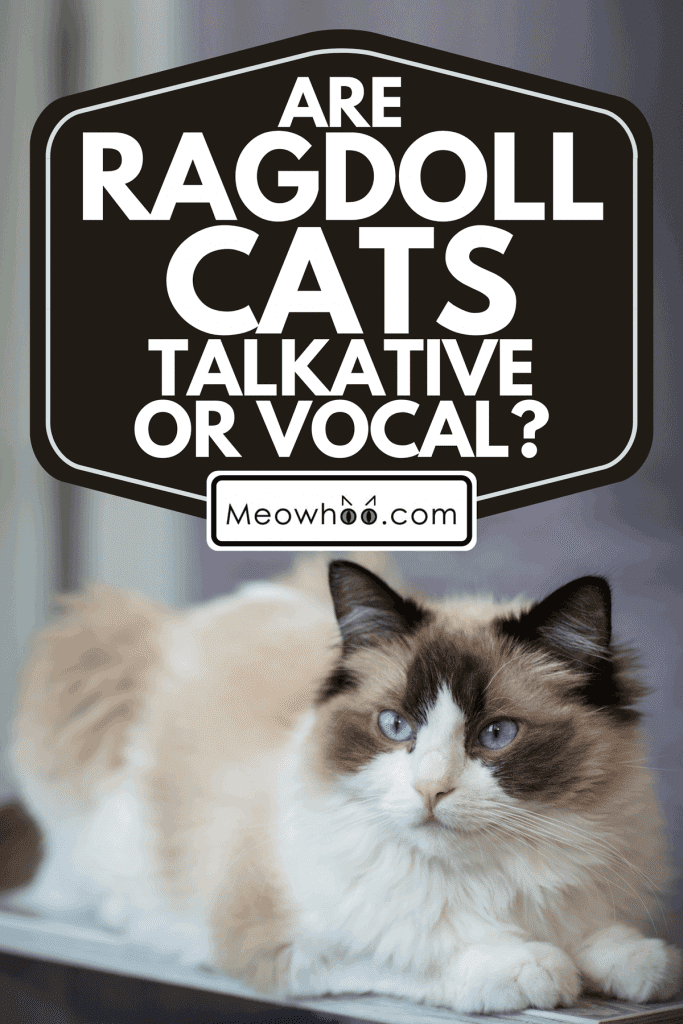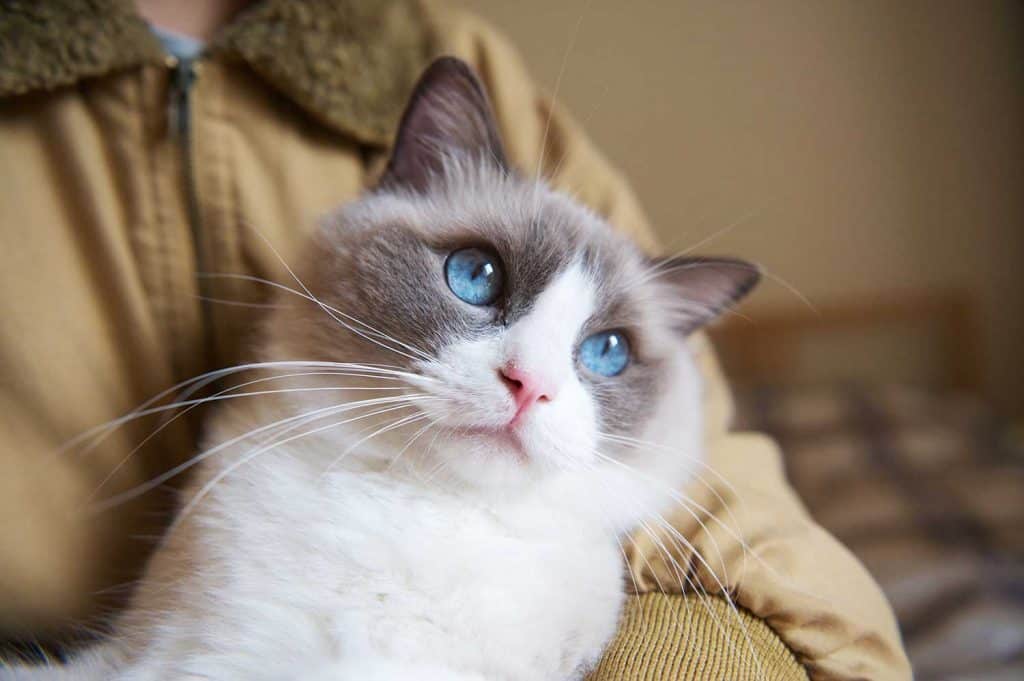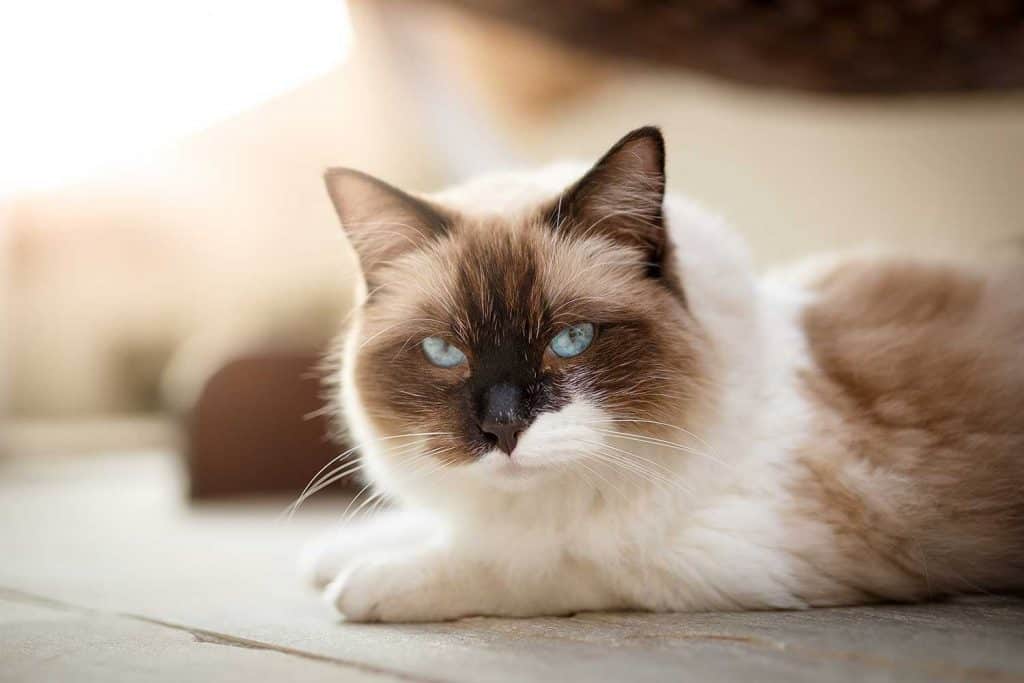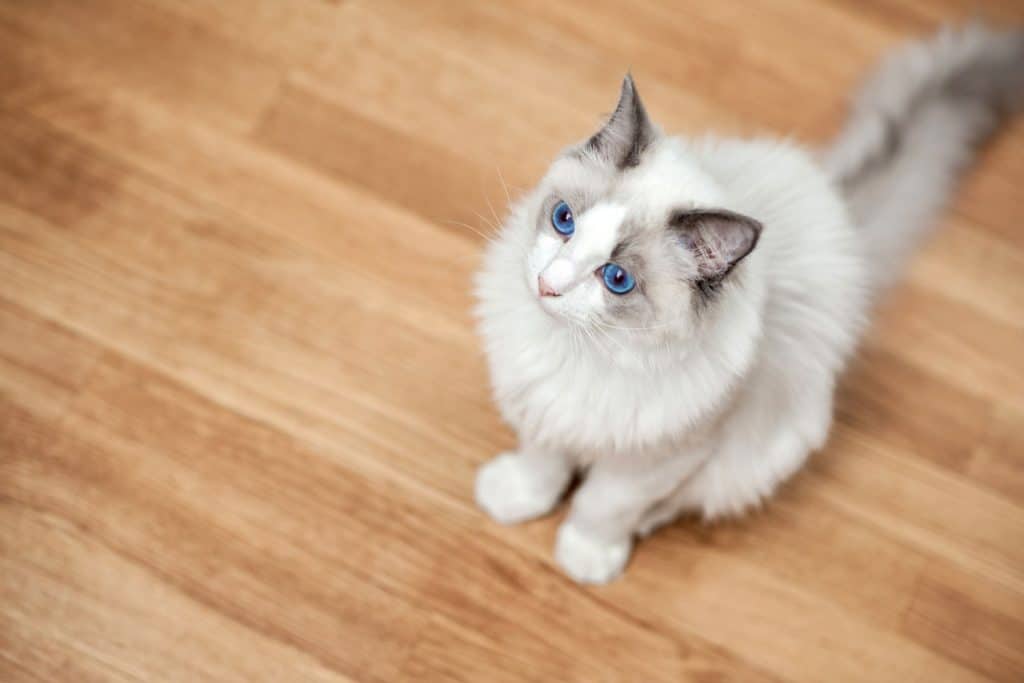Ragdoll cats, known for their sweet and laidback nature, make wonderful companions in the comfort of your home.
However, if your feline friend exhibits a talkative demeanor, you might find yourself pondering whether their chattiness stems from their inherent talkative nature or if there's something more to it.
Uncover the truth behind their expressive meows with our research findings.
Unlocking the Silence: Understanding the Vocal Side of Ragdoll Cats
Ragdolls, known for their tranquil demeanor, may surprise you with their talkative nature when seeking interaction or playtime.
These affectionate felines have a way of vocalizing their desires to capture your attention. From requesting food to expressing discontent, their meows can convey a range of messages.
Moreover, these vocalizations might even serve as a signal of underlying health concerns.
If you're curious about the vocal tendencies of Ragdoll cats, you are in the right place!
In this article, we delve into this intriguing topic, providing in-depth insights.
Join us as we explore how to minimize excessive vocalization, address common queries like whether Ragdolls cry frequently, and unveil more about these captivating companions.
Without further ado, let's get into it.

When Do Ragdoll Cats Become Talkative?
Ragdoll cats do not talk that much. But like most animals, your cats could become vocal if they demand food, water, and attention.
Your cat may be trying to communicate distress or seek your attention.
Excessive meowing in Ragdolls can be attributed to factors such as frustration or aggression.
To determine the underlying reasons, closely observe how your cats express themselves through their vocalizations.

Here are the different pitches of your cat's meows:
- A dragged meow indicates your cat's demand, such as wanting you to let go of them.
- A series of meows suggests your cat's excitement.
- When your cat asks for food, they typically use a mid-pitched meow.
- A high-pitched meow could indicate pain or distress, requiring a visit to the vet for possible disorders or injuries.
If your ragdoll is healthy, they will talk less as they grow older. As time passes, you already know what you need to provide to your cats. By meeting their needs and wants, the meowing decreases.
Are Ragdoll Cats Very Vocal?
Ragdolls, by nature, are not typically vocal cats. However, they possess a soft, sweet, and melodic voice for communication. Depending on their needs and emotions, your cat can exhibit various vocalizations.
Here are the different types of meows to be aware of:
- Hungry meow - You might observe this type of meow while preparing food for your cats. Your cats might get excited watching you open the tuna can or filling up their food bowls.
- Hello meow - Ragdolls greet you with a cheerful and lively meow upon entering the room, while with other cats, they may offer a gentle trill.
- "Do something for me" meow - Your cat can meow loud to ask you a favor, like opening a door for them.
- Attention-seeking meow - Short bursts of meows can mean that your cat wants to play with you. You can also provide your cats with their toys to stop meowing.
- Meow of pain - You will know that your cat is in pain if the meowing is woeful or distressed. You can observe your cat's body language to see if they are feeling some pain.
- Scared meow - This type of meow is loud and intense. The meowing stops when the cause of fear disappears.
Understanding these meow variations helps you decipher your cat's messages and meet their needs effectively.
How To Make Your Ragdoll Cat Less Vocal
To reduce your ragdoll cat's vocalization, follow these tips:
- Ignore your cat's meowing: By not responding to their demands for attention, your ragdoll may gradually stop seeking constant interaction.
- Adjust feeding schedule: If your cat tends to meow loudly at night, try feeding them a late meal in the evening. This can help satisfy their hunger and reduce nighttime vocalizations.|
- Promote daytime activity: Encourage your ragdoll to engage in more active play and exercise during the day. This can help them expend their energy and result in less meowing.
Remember, while working to minimize your cat's vocalization, it's essential to maintain a strong bond with them.
By implementing these strategies, you can help create a quieter environment for both you and your ragdoll cat, while still fostering a strong and loving relationship.
What Are The Traits Of A Ragdoll Cat?

Ragdoll cats possess several distinctive traits that make them beloved companions:
- Docile nature: Ragdolls are gentle and calm, displaying a domesticated temperament that easily meshes with human interactions.
- Limping behavior: This breed is named "Ragdoll" due to their tendency to go limp when picked up, resembling a ragdoll toy.
- Loyal and social: Ragdolls form strong bonds with their owners and enjoy being part of family activities, seeking constant human contact.
- Playful demeanor: Despite their docility, ragdolls have a playful side that remains evident throughout their lives. Keep them engaged with a variety of cat toys and scratchers.
- Close companionship: Ragdolls prefer to stay by their owners' side rather than perch on high cat trees, constantly seeking their presence and affection.
In summary, Ragdoll cats are a perfect blend of gentle nature, loyalty, and playful spirit, making them ideal companions for individuals and families alike.
Do Ragdolls Cry A Lot?
When it comes to vocalizations, Ragdoll cats can be quite expressive and may cry frequently to communicate their needs.
Here are some common reasons why Ragdolls cry:
- Hunger or thirst: If your Ragdoll is craving food or water, they may cry to alert you of their needs.
- Loneliness: Ragdolls are sociable cats and may cry when they feel lonely or seek companionship.
- Attention-seeking behavior: If left alone for extended periods, your Ragdoll may cry more frequently to gain attention upon your return. Providing playtime and interaction can help alleviate this.
It's important to note that excessive crying can also be a sign of underlying health issues. If you suspect your Ragdoll's crying is abnormal or if they exhibit other concerning symptoms, consult a veterinarian for a thorough evaluation.
Why Do Ragdolls Talk So Much?

Ragdolls will talk a lot when they want to communicate with people. This cat breed does not meow to other felines.
Due to their intelligence level, they tend to figure out a situation and make noises accordingly.
The usual reason they talk too much is that they want you to fulfill their requests.
This is especially true if you leave your cats at home for more extended periods, as they will become talkative when you come back home. That is why you need to give your ragdolls the attention they need.
How Much Attention Do Ragdolls Need?
Ragdolls are needy like dogs. These cats need at least 1 to 2 hours of attention in a day.
You have to spend around 20 to 30 minutes before leaving and after returning home. You can bond with your cat by going for an evening walk or by simply petting them.
If you have ragdoll kittens, double the time you spend on the adult ones. Eventually, as your cats grow older, their need for attention diminishes.
You can leave your ragdolls on their own with careful training. Ask your vet for the proper techniques for ragdolls cats getting used to being independent.
Understanding the Vocal Nature of Ragdoll Cats
Ragdoll cats, known for their generally quiet nature, can surprise you with their talkative tendencies. By paying attention to the pitch and context of their meows, you can gain insights into their communication.
Their vocalizations may express joy, seek attention, or even indicate potential discomfort.
It's crucial to acknowledge that Ragdolls thrive on attention and care. While they can handle periods of being alone, it's essential to dedicate quality time to play and interact with them upon your return.
Nurturing a strong bond with your Ragdoll by understanding their vocal language and meeting their needs ensures a harmonious and fulfilling relationship between you and your beloved feline companion.
For cat-related concerns, check out these recent posts:
Do American Shorthair Cats Get Along With Other Cats? [And Other Pets]
What Are The Best Cat Treats For Training?
Some elements on this page may have been created by our team using advanced AI to provide you with top-notch cat inspired ideas. Read more about our AI Content Policy.

My rag doll cat always comes to me for petting and she is attracted to my hands whether by movement. Never showed a emotion by rubbing onto my face and around my legs. Literally my feelings are hurt. I’m the one that wants attention, lol. Please advice, thanks.
My ragdoll Daisy doesn’t rub against my face or legs either. I wouldn’t worry about that. Daisy is much more affectionate/needy than my shorthair domestic mixed. Daisy is also very attracted to my hands and feet, particularly if I’m moving them she wants to pounce. You’re not alone. I think I’m more needy than her too and I’m not all that needy. She’s a kitten so she wants to play a lot.